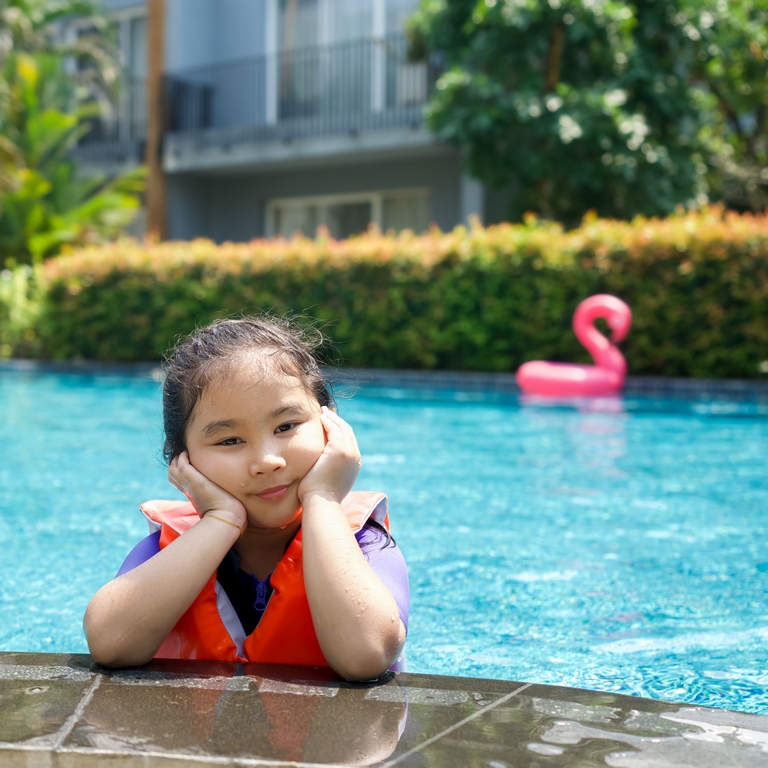Safety is Tough to Talk About


The pool industry has always been challenged when it comes to discussing and promoting safety. As Eric Herman argues here, the way forward with the safety issue is to empower consumers with information about the benefits of swim instruction, as well as the importance of supervision and the spectrum of engineered safety systems and products.
By Eric Herman
May is National Drowning Prevention Month. Every year at the beginning of the swim season, we are reminded that “safety first” is more than just rhetoric, but an ongoing call to action aimed at saving lives.
When I first started writing for the pool and spa industry back in 1989, one of my first “beats” was safety, particularly child-drowning prevention. As a lifetime swimmer and overall water enthusiast, I had always been aware of the risks associated with water. Coming into the pool industry and writing about safety dramatically increased and deepened my understanding of aquatic safety, as I’ve worked to raise awareness in others.
Fact is, it’s always been a tricky subject for the pool and spa industry. On one hand there’s an obligation, a public trust, to make the industry’s products as safe as possible, to encourage the safe use of pools and other bodies of water – while at the same time not scaring people away from pool ownership and an overall aquatic lifestyle.
For my part, it’s been a long and at times unsettling journey. I’ve interviewed parents who have lost children in drownings or those who have been permanently brain injured, and I’ve spent time with professionals who have devoted their lives to increasing water safety. There have been people in the industry who believe we shouldn’t talk about it at all because it sends the wrong message and increases exposure to liability.
On the other end of the spectrum, I’ve known those from outside the industry who believe pools should be forever banned, filled in and forgotten. And I’ve encountered countless opinions that fall somewhere between the extremes.
I’m also very proud of the fact that my son, Brett Herman, worked as a lifeguard for many years, and taught early childhood swim safety. I’ve seen first hand what involvement in swimming and guarding can do for the life of a young person. I’ve also seen firsthand what it’s like to watch someone die of drowning in the ocean. I’ve also served as a volunteer grief counselor, and have worked with a couple who lost their son when he drowned while surfing.
Suffice it to say, water safety has been a part of my personal and professional life.
Through all of it, I’ve come to firmly believe that empowerment is the path to fewer drowning incidents. What do I mean by that? Quite simply, people who seek the water should always be equipped with information that enables them to reduce the risks. Let’s face it, 70% of our planet is covered in water, and as humans we are inextricably drawn to it. The only logical response to the risk factors is informed action that mitigates risk.
Specifically, swimming competency is the biggest and most effective measure we have. The statistics are stunning, learning to swim reduces the risk of drowning by 88%, according to the National Institute of Health. To be sure, that does not make swimmers drown proof. The strongest swimmers in the world drown sometimes, but there can be no question that learning to swim stacks the deck in favor of safety.
Yes, other measures are important too, particularly parental supervision, which is always near the top of the safety list. Certainly, physical barriers such as safety covers, fences, alarms, etc. can be deployed to increase safety.
I’ll leave it to others to promote and debate technology and products designed to keep people, particularly kids, safe in the water. But as we recognize safety, this month and always, I believe we should embrace learn-to-swim programs with commitment and enthusiasm.
Not only does learning to swim reduce risk, as we know, it increases physical and mental health, provides a positive social environment for kids, and it opens up a world of aquatic activities to all people.
Yes, talking about safety is not easy, but promoting swim instruction is and should always be on the tips of our tongues.
Photo by Chadchai Krisdapong | Shutterstock









